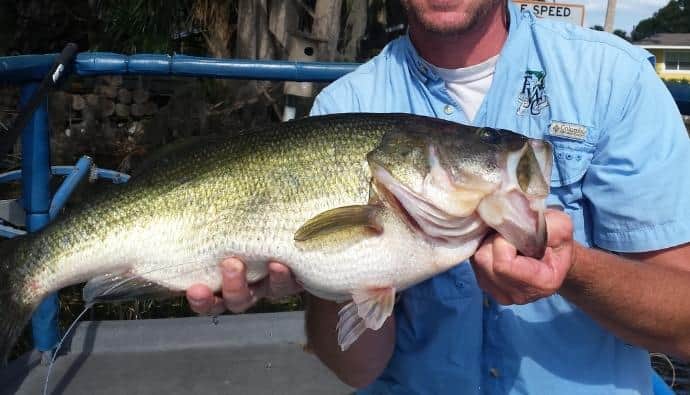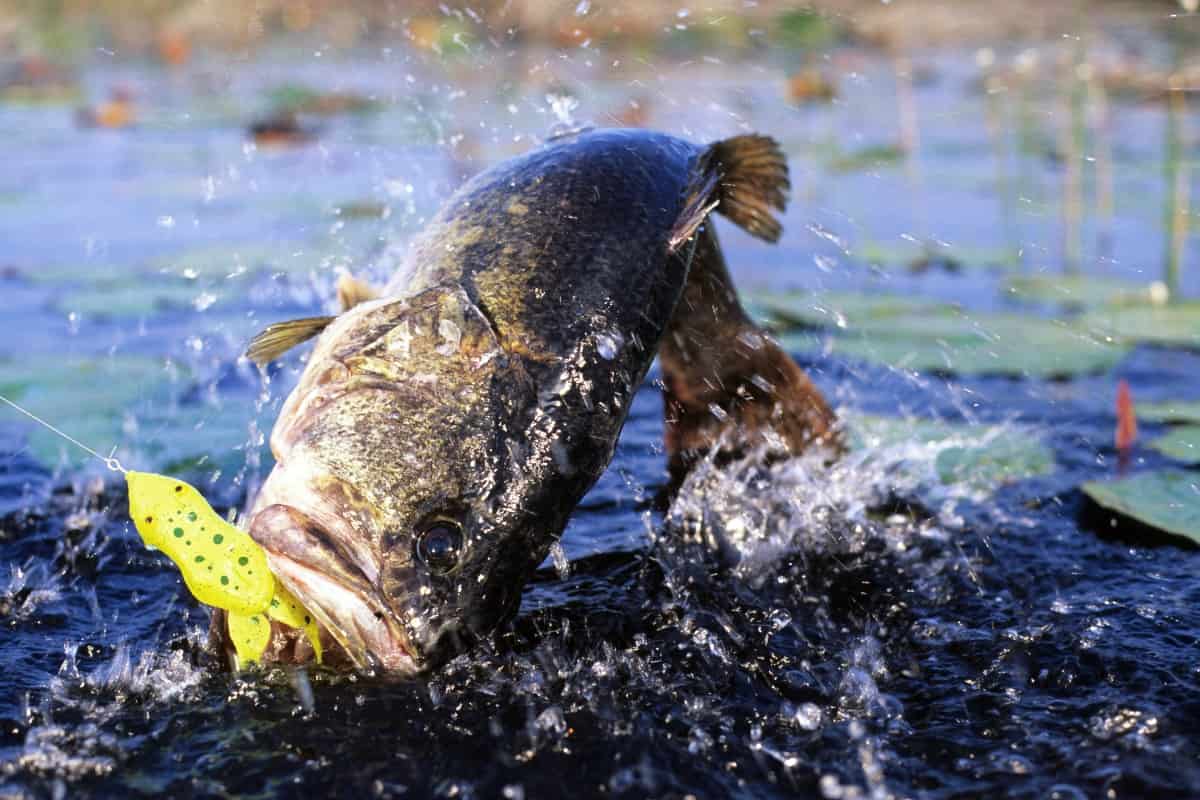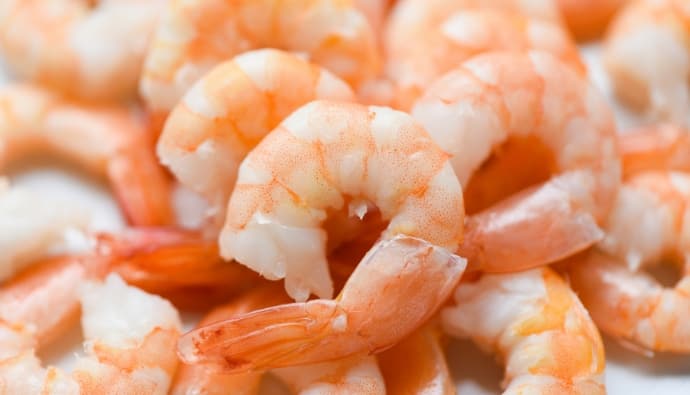All bass types have teeth, but many anglers don’t know or might not have realized this. Unlike walleye, sauger, northern pike, and walleye that have sharp teeth, bass have small teeth that may be difficult to spot unless you particularly look for them.
Several bass species have more conventionally shaped pointed teeth, while others have a rough row of small spikes that mimic grit. Although most of them resemble rough sandpaper more than natural teeth, the goal is the same.
Bass use these pointed teeth to catch insects, smaller prey fish, crayfish, and other foods. When the bass grasps its target, they push it back into the mouth, where the second batch of grinding teeth will finish processing it.
Do bass have teeth? Here you will learn if different bass varieties have teeth and how to handle bass correctly.
Do the Largemouth Bass Have Teeth?
The top and bottom jaws of largemouth bass are lined with a rough row of tiny teeth that resemble grit. Even though a largemouth bass has sharp microscopic teeth, most seasoned anglers won’t hurt themselves holding one.
Largemouth bass teeth feel like abrasive scrub brush or sandpaper, and if you handle them correctly, they will cause minimal to no harm to your thumb.
Do the Smallmouth Bass Have Teeth?
The teeth of smallmouth fish are nearly comparable to the largemouth bass. The bass employs tiny but relatively sharp, grit-like teeth to grab crayfish, which are their most frequent prey.
Since the smallmouth bass is more active than largemouth bass, they may inflict bruised shins on your thumb if you don’t handle them tightly.
Do the Rock Bass Have Teeth?
The teeth of rock bass are pretty small and can be challenging to see. The fish is well-muscled despite being relatively small.
The fish might flap around if handled incorrectly or your hold is not firm enough, instantly tearing the skin on your thumb. Out of all the bass species, rock bass poses the most risk to your thumb.
Do the Striped Bass Have Teeth?
Even though striped bass can grow to sizes that are significantly larger than largemouth and smallmouth bass, their teeth are remarkably comparable. Their teeth formation is the same, but the striped bass teeth are occasionally claimed to be much sharper. A striped bass’s teeth are designed to hold prey like other fish instead of shredding it apart.
Do the Peacock Bass Have Teeth?
The teeth on Peacock Bass are clearly visible and point inward toward the fish’s throat. They have significantly stronger jaws than other species of bass. Most anglers protect their skin from the fangs when holding Peacock Bass using thumb protectors or gloves.
How to Handle and Hold Bass Securely
Unlike sharks, the bass has teeth that are specially designed more for grasping prey rather than slicing it apart—holding a bass is quite simple and safe because their teeth feel more like coarse sandpaper than genuine spikes.
Their mouths are broad, making it simple to insert a thumb and squeeze the tongue and lower lip. Using your index finger and the assistance of the other fingers will ensure you have a tight grip.
Putting your thumb into the mouth of a freshly caught bass is perfectly safe. If the fish flails, you might get some minor skin bruises, but their teeth aren’t big enough to seriously hurt your thumb.
How to Grab a Bass Properly
The teeth of bass are not harmful to people; thus, acquiring a secure hold of them is simple. If you don’t want a bass to injure your thumb, using thumb protectors and fishing gloves is essential.
Bass anglers usually refer to these minor abrasions as the bass thumb. Individual anglers say that your fishing trip is more productive if your “bass thumb” are more visible.
The bass thumb is common to anglers who handle bass regularly. Wearing this protective gear gives your full hand mobility while shielding your skin from the harsh, angular teeth of the bass you’re catching. This can be an ideal option for timid anglers or beginners until they feel more confident handling their catches.
Is Bass Thumb Dangerous?
Bass thumb poses no immediate risk to your health or safety. However, if you experience bass thumb and are concerned about infection or irritation, ensure you see your doctor. Even though bass thumb can be a nuisance, you won’t lose any fingers.
How to Safely Hold a Bass
You can hold all bass types and sizes securely through “lipping,” which entails inserting your thumb inside their mouth and firmly grasping the bottom jaw. There are two ways you can securely hold bass: vertical hold and horizontal hold, as long as you balance their weight using the other hand below their body.
Vertical Hold
The most effective technique to avoid damaging the fish’s jaw is holding bass vertically. The vertical hold also gives you a clear view of the fish’s mouth and upper intestines, making it a great position to hold the fish while removing the hook.
You may safely hold the majority of bass by squeezing the lower lip and putting your index, and other fingers on the lip’s outside for a secure grip. The angle between the fish’s lower lip and the upper lip should not exceed 10 degrees. Holding a fish at an angle greater than 10 degrees may result in injuries that inhibit the bass’ eating ability, leading to higher mortality rates.
Small bass are held at a slight tilt by their bottom jaw since they won’t put a lot of weight on the jaw. However, holding anything larger than a couple of pounds in total weight in this way might seriously harm or even dislodge the fish’s bottom jaw. Fishermen holding bass should always maintain as much body verticality as possible to ensure the humane handling of fish for catch and release programs.
Horizontal Hold
If you are a bass angler gripping the fish horizontally for a photo season, ensure you support the fish’s weight by putting your other hand beneath the anal fin or tail base area. Doing this, you lessen the strain on the lower jaw while maintaining a firm grip on the fish. A totally acceptable bass holding technique is the horizontal grip with a hand supporting the body.
For longer and heavier fish, you can put one or two fingers under the anal fin for larger or heavier fish. The fish’s body has to stay pretty straight while being supported by your hand to avoid the tail from falling to a highly unsafe angle.
Keep Your Bass Wet
For a fish’s overall health, the less handling you do, the better. When bass swims around plants and logs, a slime coat shields their scales from scrapes, cuts, and other harm.
If you handle them well, you can keep their slime coat and release them back into the lake almost entirely undamaged so that they can be fished again in the upcoming days.
Using a net, preferably one made of silicon rubber rather than a rope mesh is the best way to prevent touching a bass and destroying its coating.
What Is the Wrong Way to Hold a Bass?
The “lip grip” is arguably the most contentious technique of holding a bass. In this situation, the fish’s body is not vertically in a straight line. As a result, too much pressure is exerted on the fish’s jaw, compromising its capacity to produce suction while eating. The bass will not survive since he can’t eat.
The Best Fishing Line for Bass Fishing
Choosing the appropriate line for bass fishing is crucial due to their teeth. Search for robust, abrasion-resistant lines. A line that isn’t designed to withstand abrasive contact might be easily weakened or entirely cut through by bass that land a bait vigorously and set up an intense fight.
Because the bass has strong jaws and teeth, choosing the proper form of the fishing line might make the difference between landing a trophy fish and losing it.
When bass fishing, monofilament is a great line to take into account because of its exceptional abrasion resistance. It’s the line of preference for casual fishing for both novice and seasoned anglers.
Monofilament is solid and flexible enough to you reel each fish you capture. It also keeps its knot nicely in place and is simple to tie. This characteristic makes it an excellent option for bass fishermen to learn how to connect leaders or lures appropriately. Most importantly, this line is cost-effective; thus, most anglers can afford it.
A braided line, which is frequently used while fishing for big bass, has exceptional weight strength. However, a good-sized bass can quickly destroy or entirely sever it because it is highly vulnerable to abrasion cuts.
The main advantage of a braided line while fishing for bass is its general strength. While maintaining the modest overall diameter, it can offer a substantially greater weight rating compared to other lines. This enables you to cast farther into more forested areas and overgrown vegetation.
Fluorocarbon is a fantastic alternative if you don’t prefer monofilament as a leader on your braided line. It has an excellent abrasion resistance, which makes it ideal for landing bass with teeth that are more sharp than typical.
When fishing for shy or elusive bass that respond to visual cues in the water, the fluorocarbon line is another highly regarded line option. Using fluorocarbon line will nearly disappear when submerged, allowing your lure to be the significant attraction instead of a foreign item that might scare away that trophy bass that has eluded anglers for years.
Conclusion
Bass do have teeth like the majority of freshwater fish. But the teeth in the bass mouth are not the razor-sharp teeth you would see on a northern pike, shark, or barracuda. Bass have considerably rough teeth that feel like sandpaper and are much tinier.
Handling a bass well prevents you from getting a bass thumb. You can also wear thumb protector or fishing gloves to avoid bass thumb. The most recommended ways to hold a bass are either vertical hold or horizontal hold.




 Facebook
Facebook YouTube
YouTube








